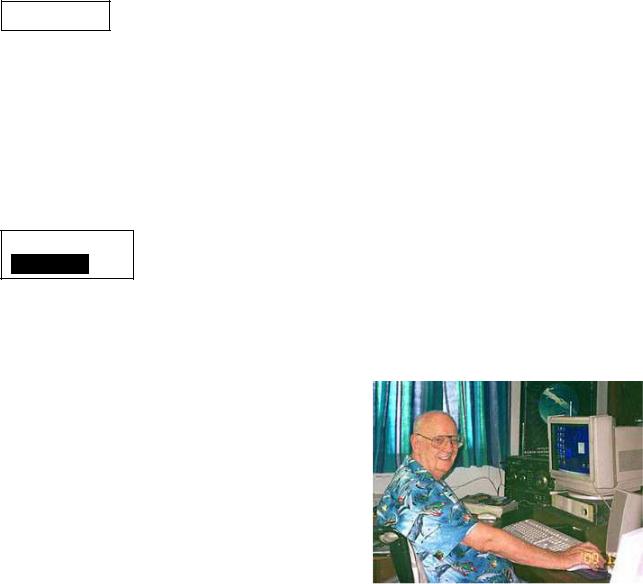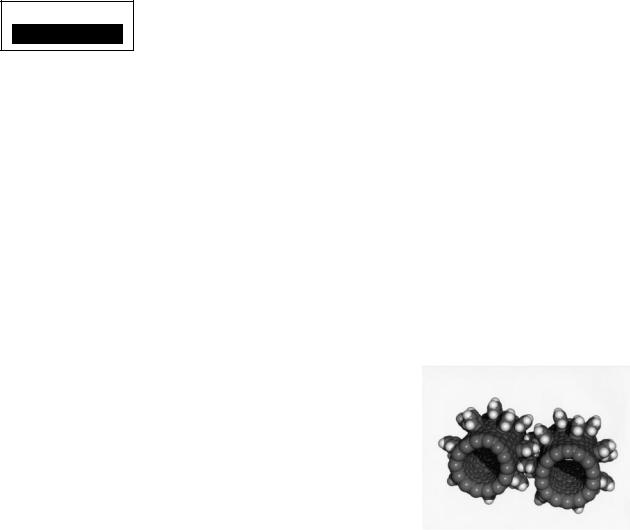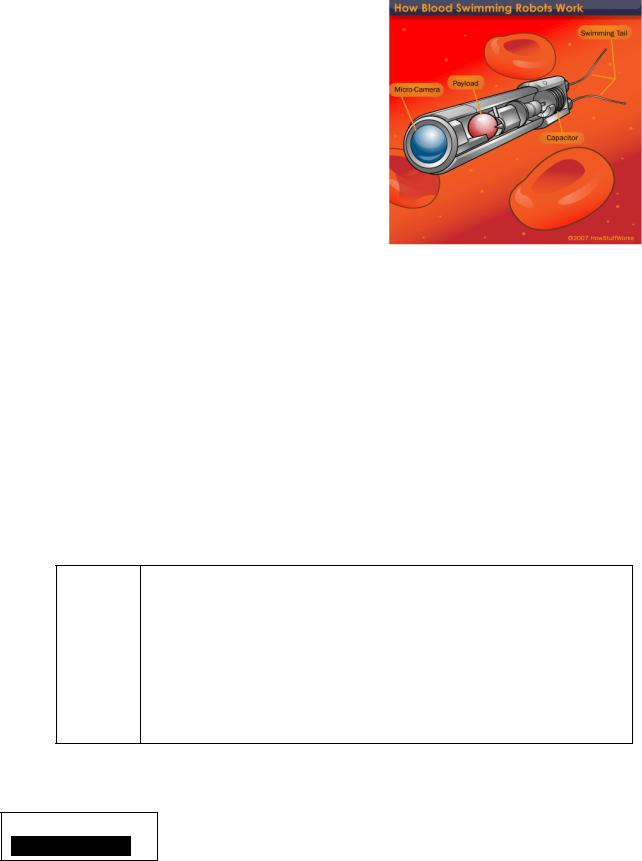
9223
.pdf
50
UNIT 5
FUTURE PERFECT?
For a start
How do you feel about the future?
Which of these words best describes your feelings about it? Explain why.
excited |
confident worried |
hopeful |
afraid |
optimistic uncertain |
|
|
|
|
|
Sir Arthur Charles Clarke, (1917–2008) was a British science
Activity 5.1
Predictions fiction author, inventor, and futurist. In his book Profiles of the Future he published a timetable of predictions up to the year 2100.
1. Read the predictions and rank them from
the most probable (1) to the least probable
(9). Explain why.
Arthur C. Clarke's predictions for the 21st century:
2010 A new form of space-based energy is
adopted.
2011 Space flights become available for the public.
2016 All existing currencies are abolished. A universal currency is adopted.
2020 Artificial Intelligence reaches human levels. There are now two intelligent species on Earth, one biological, and one nonbiological.

51
2021 The first human landing on Mars is achieved.
2023 Dinosaurs are cloned from fragments of DNA. A dinosaur zoo opens in
Florida.
2025 Brain research leads to an understanding of all human senses. Full immersion virtual reality becomes available. The user puts on a metal helmet and is then able to enter "new universes."
2040 A universal replicator based on nanotechnology is now able to create any object from meals to diamonds. The only thing that has value is information.
2095 The first humans are sent out to nearby star systems already visited by
robots.
Many scientists all over the world say: 21st-century nanotechnology will be more important than all the greatest
technologies of the 20th century put together.
Do you know:
1.What is nanotechnology?
2.Where is it used nowadays?
3.Where could it be used in future?
1. Read the text and find answers to the questions above.
Nanotechnology
Tiny things
A.The prefix "nano" means one-billionth. So, 1 nanosecond is one-billionth of a second, and 1 nanometer is one-billionth of a meter.
52
A human hair is about 80,000 nanometers wide.
B.Nanoscience (or nanotechnology) refers to the study of things that are smaller than about 100 or 200 nanometers. It is the study and development of the small so that it will affect the large. One of the basic goals of nanotechnology research is to control individual atoms. Carbon, hydrogen, oxygen, and other types of atoms are the building blocks of the universe. They make up galaxies, stars, planets, rocks, water, people, trees, CDs, cells — all the stuff ou t there.
Copying nature
C.Most things that people build come together in a "top-down" way. If you want to make a table, for instance, you cut down a big tree, make wooden boards, and hammer them together. Nature, on the other hand, builds things from the bottom up. When atoms join together, they make molecules. Each molecule has a certain shape, and a molecule's structure determines what it can do. Molecules can then come together to make a cell — or a tree.
D.Nanotechnologists want to do what nature does. They want to create tiny, intricate structures — atom by atom or molecu le by molecule — that have specific features or applications. For example, instead of cutting and processing thin slices of silicon to make computer chips, engineers work with individual molecules to build computer processors and memories. Putting such molecules together would create a tiny chip that could hold an enormous amount of memory. You could end up with a supercomputer the size of your cell phone.
E.Eventually, nanotech could touch every part of our lives. There might be molecular motors and nanorobots that can build other nanomachines. In medicine, nanodevices could go inside the body to deliver drugs exactly where they need to go, monitor vital signs, or perform delicate

53
operations. A nanoscale coating on glass could help turn the sun's energy into electricity. Nanotech could also help make light bulbs more efficient.
F.Already, a company called Nano-Tex makes fabrics with different kinds of "molecular hooks" that can repel stains, eliminate wrinkles, or shed
water. In the future, nanotech-enhanced clothes could respond to the weather to warm you up or cool you down. The U.S. Navy is using nanotech coatings on their submarines to keep sea creatures off and reduce corrosion. Other nanomaterials could lead to lightweight airplanes and other types of equipment.
2.Read the text again. Which paragraphs give information about the following things?
what could be done with the help of nanotechnology difference between nature and people in creating things how nanotechnology is used now
subject and aim of nanotechnology the meaning of nano
imitating nature by nanotechnologists
Activity 5.3 Vocabulary focus
1. Find in the text all the words with the prefix "nano".

54
2. Match the elements wit h their molecules:
hydrogen, oxygen, carbon, silicon
1 |
2 |
3 |
4 |
3.Fill in the gapped sentences with the following word combinations. Change the form of the word if necessary:
application, cell, fabric, coating, determine, unive rse
1.Early astronomers th ought that our planet was the centre o f the ……….
2.They can manufacture a whole host of body parts, from neurons to muscles to blood ……….
3. |
The amount of avail able water ……………… the number of |
houses that can |
|
be built. |
|
4. |
Students learned the practical …………….. of the theor |
y they had discussed |
|
in the classroom. |
|
5. |
The tent has a waterproof …………….. on both sides. |
|
6. |
Man-made ………………. suc h as polyester are easy to wash and i |
ron. |

55
4.a. Match the followi ng words and phrases. Translate them into Russian.
tiny, intricate |
water |
deliver |
the weather |
monitor |
wrinkles |
repel |
corrosion |
eliminate |
structures |
shed |
creatures |
respond to |
drugs |
reduce |
stains |
sea |
vital signs |
|
|
b. Make up your ow n sentences using these expressions.
The possibilities for nanotechnology may seem
Activity 5.4
Threats |
limitless, but there are potential problems that |
already worry some people.
∙Certain nanoscale particles could cause health proble ms, for example. Researchers have a lready found that molecules can h arm living cells.
∙And what about n anorobots that could make copies of themselves, growing in number so quickly that they take over the world, destroying the environment?
∙………
∙………
Can you think of the other problems which could be caused byy nanotechnology?
Add to the list.
|
56 |
|
|
1. What functions does your phone have? Do you use all of |
|
Activity 5.5 |
||
|
||
Interview |
them? Would you like to have more/ less functions? |
Jonathan Mitchener has always got an eye on the future. And he's got one of the most interesting - and intriguing - jobs at British Telecommunications Group plc (BT), he is a futurologist.
2.Read the interview with Jonathan Mitchener and answer the questions:
∙What does his job involve?
∙What does he say about future development of technology?
Before reading the text match the words from column A with their synonyms
in column B. |
|
∙ |
|
A |
B |
device |
difficulty |
change |
method |
business |
cram |
stuff |
industry |
break down |
alter |
benefit |
split |
obstacle |
gadget |
approach |
gain |
Jonathan, what is your job at BT?
I'm a futurologist. It's my job to look ahead to se how technology will develop in the coming years. And I work with BT's bigger customers to see what's up-and- coming and to identify disruptive technologies.
57
'Disruptive technologies?' What are they?
They're technologies that have changed the way business is done. Probably the best example of a disruptive technology is the internet. It has fundamentally changed the way businesses operate – you could say it's turned the business world on its head. Another would be the iPod. It hasn't just changed the way people listen to music it's altered the way people buy music. It's forced the music industry to change.
I know you're really keen on gadgets - what can we expect in the future?
What's clear is that you can expect gadgets and devices to carry more and more functions. You've only got to look at a mobile phone today - with a built-in camera, video, radio, net access etc - to see that. The problem, is that as gadgets are filled with more and more functions, people find them harder to use. That's why gadgets need to be easier to use.
How can this be achieved?
Easy-to-use touch-screens are one way to solve this problems but this is not enough on its own. The solution needs to be more radical. It's not just about stuffing more functions into one box. In fact, we now need to split functions.
What do you mean?
We need to break down the functions from single devices into multiple devices. Instead of cramming all these functions into one device, we need to have separate devices - a camera, a phone, a radio... But we need to come up with devices that can still co-operate with each other...that talk to each other. By breaking things up we can solve the problems of complexity.
58
Is this possible?
Of course! But it will come in stages. You're already seeing it happen to a certain degree with the next generation of Bluetooth. Another example is ultra-wideband (UWB) which would enable lots of information to be transmitted very fast over very short distances. I believe we could be using gadgets this way in the next six or seven years.
It sounds interesting. Any reasons why this might not happen?
One of the obstacles to this cooperative approach might be those manufacturers that don't want their products to work with those from other manufacturers. They may not like the idea but it could end up delivering more benefits in the long run.
What about the environment?
At the moment there is lots being done to remove harmful chemicals - everything from solder to plastics - from PCs and gadgets. There is now a greater green attitude to manufacturing electronic products, which could be recycled. New battery technology is also being developed that makes them even faster to charge, and there is also work going on to develop solar-powered gadgets.
So the future looks set to deliver some interesting developments?
It certainly does...
4. Read again and mark the following statements as true or false. Correct the false ones.
1.Disruptive technologies have changed the way businesses operate.
2.iPod made the music industry change.
3.It’s necessary to include more and more functions into gadgets.

59
4.We need to have separate devices that can cooperate with each other.
5.Manufacturers nowadays are more concerned about environment.
6.Jonathan sounds pessimistic about future development of tecchnology.
|
Activity 5.6 |
|
|
Discuss the following questions: |
|
|
|
|
|
||
|
Extension |
|
|
|
|
|
|
|
|
|
|
1.Do you believe that gadgets will be easier to use in futture? Why/ Why
not?
2.Do you agree th at manufacturing electronic products is becoming more environmentally-friendly? Can you give examples?
Activity 5.7
Vocabulary
Make nouns from the following words:
develop
operate
solve
complex
possible
succeed
transmit
manufacture
